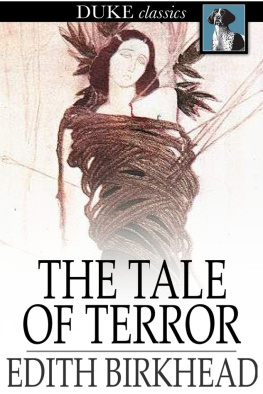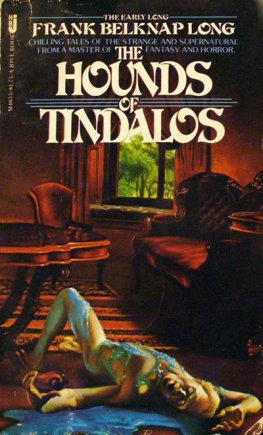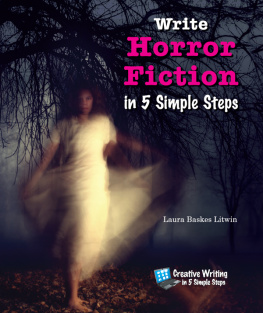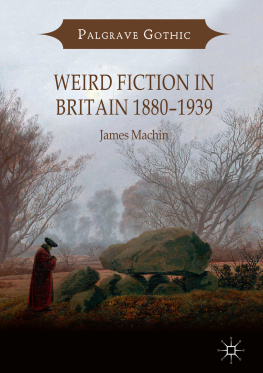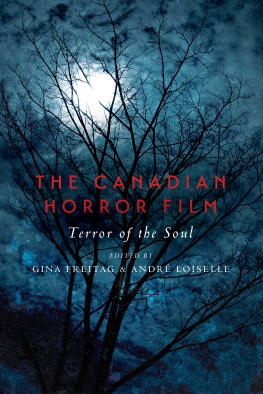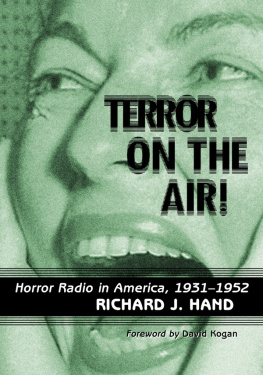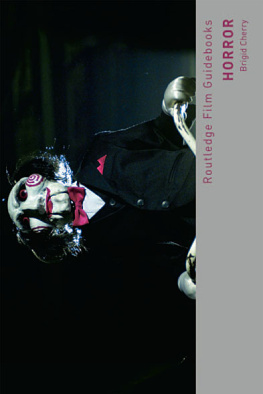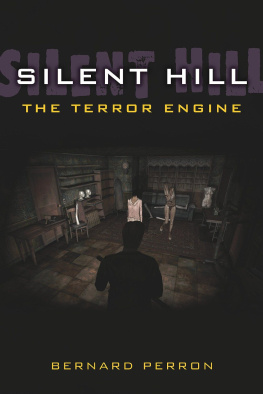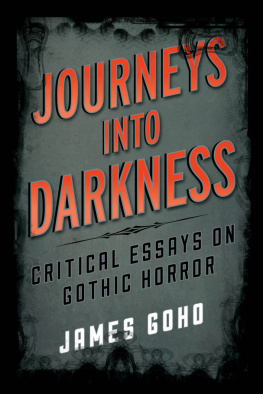THE TALE OF TERROR
A STUDY OF THE GOTHIC ROMANCE
* * *
EDITH BIRKHEAD
*
The Tale of Terror
A Study of the Gothic Romance
First published in 1921
ISBN 978-1-62013-081-0
Duke Classics
2012 Duke Classics and its licensors. All rights reserved.
While every effort has been used to ensure the accuracy and reliability of the information contained in this edition, Duke Classics does not assume liability or responsibility for any errors or omissions in this book. Duke Classics does not accept responsibility for loss suffered as a result of reliance upon the accuracy or currency of information contained in this book.
Contents
*
Preface
*
The aim of this book is to give some account of the growth ofsupernatural fiction in English literature, beginning with thevogue of the Gothic Romance and Tale of Terror towards the closeof the eighteenth century. The origin and development of theGothic Romance are set forth in detail from the appearance ofWalpole's Castle of Otranto in 1764 to the publication ofMaturin's Melmoth the Wanderer in 1820; and the survey of thisphase of the novel is continued, in the later chapters, to moderntimes. One of these is devoted to the Tale of Terror in America,where in the hands of Hawthorne and Poe its treatment became afine art. In the chapters dealing with the more recent forms ofthe tale of terror and wonder, the scope of the subject becomesso wide that it is impossible to attempt an exhaustive survey.
The present work is the outcome of studies begun during my tenureof the William Noble Fellowship in the University of Liverpool,1916-18. It is a pleasure to express here my thanks to ProfessorR.H. Case and to Dr. John Sampson for valuable help and criticismat various stages of the work. Parts of the MS. have also beenread by Professor C.H. Herford of the University of Manchesterand by Professor Oliver Elton of the University of Liverpool. ToMessrs. Constable's reader I am also indebted for several helpfulsuggestions.E.B.
THE UNIVERSITY OF BRISTOL,
December, 1920.
Overview of Chapters
*
Chapter I - Introductory.
The antiquity of the tale of terror; the element of fear inmyths, heroic legends, ballads and folk-tales; terror in theromances of the middle ages, in Elizabethan times and in theseventeenth century; the credulity of the age of reason; therenascence of terror and wonder in poetry; the "attempt to blendthe marvellous of old story with the natural of modern novels."
Chapter II - The Beginnings of Gothic Romance.
Walpole's admiration for Gothic art and his interest in themiddle ages; the mediaeval revival at the close of the eighteenthcentury; The Castle of Otranto; Walpole's bequest to laterromance-writers; Smollett's incidental anticipation of themethods of Gothic Romance; Clara Reeve's Old English Baron andher effort to bring her story "within the utmost verge ofprobability"; Mrs. Barbauld's Gothic fragment; Blake's FairElenor; the critical theories and Gothic experiments of Dr.Nathan Drake.
Chapter III - "The Novel of Suspense." Mrs. Radcliffe.
The vogue of Mrs. Radcliffe; her tentative beginning in TheCastles of Athlin and Dunbayne, and her gradual advance in skilland power; The Sicilian Romance and her early experiments inthe "explained" supernatural; The Romance of the Forest, andher use of suspense; heroines: The Mysteries of Udolpho;illustrations of Mrs. Radcliffe's methods; The Italian;villains; her historical accuracy and "unexplained" spectre inGaston de Blondeville; her reading; style; descriptions ofscenery; position in the history of the novel.
Chapter IV - The Novel of Terror. Lewis and Maturin.
Lewis's methods contrasted with those of Mrs. Radcliffe; his debtto German terror-mongers; The Monk; ballads; The Bravo ofVenice; minor works and translations; Scott's review ofMaturin's Montorio; the vogue of the tale of terror betweenLewis and Maturin; Miss Sarah Wilkinson; the personality ofCharles Robert Maturin; his literary career; the complicated plotof The Family of Montorio; Maturin's debt to others; hisdistinguishing gifts revealed in Montorio; the influence ofMelmoth the Wanderer on French literature; a survey ofMelmoth; Maturin's achievement as a novelist.
Chapter V - The Oriental Tale of Terror. Beckford.
The Oriental story in France and England in the eighteenthcentury; Beckford's Vathek; Beckford's life and character; hisliterary gifts; later Oriental tales.
Chapter VI - Godwin and the Rosicrucian Novel.
Godwin's mind and temper; the plan of Caleb Williams asdescribed by Godwin; his methods; the plot of Caleb Williams;its interest as a story; Godwin's limitations as a novelist; St.Lean; its origin and purpose; outline of the story; thecharacter of Bethlem Gabor; Godwin's treatment of the Rosicrucianlegend; a parody of St. Lean; the supernatural in Cloudesleyand in Lives of the Necromancers; Moore's Epicurean; Croly'sSalathiel; Shelley's youthful enthusiasm for the tale ofterror; Zastrozzi; its lack of originality; St. Irvyne;traces of Shelley's early reading in his poems.
Chapter VII - Satires on the Novel of Terror.
Jane Austen's raillery in Northanger Abbey; Barrett's mockeryin The Heroine; Peacock's Nightmare Abbey; his praise of C.B.Brown in Gryll Grange; The Mystery of the Abbey, and itsmisleading title; Crabbe's satire in Belinda Waters and ThePreceptor Husband; his ironical attack on the sentimentalheroine in The Borough; his appreciation of folktales; SirEustace Grey.
Chapter VIII - Scott and the Novel of Terror.
Scott's review of fashionable fiction in the Preface toWaverley; his early attempts at Gothic story in Thomas theRhymer and The Lord of Ennerdale; his enthusiasm for Buerger'sLenore and for Lewis's ballads; his interest in demonology andwitchcraft; his attitude to the supernatural; his hints to thewriters of ghost-stories; his own experiments; Wandering Willie'sTale, a masterpiece of supernatural horror; the use of thesupernatural in the Waverley Novels; Scott, the supplanter of thenovel of terror.
Chapter IX - Later Developments of the Tale of Terror.
The exaggeration of the later terror-mongers; innovations; thestories of Mary Shelley, Byron and Polidori; Frankenstein; itspurpose; critical estimate; Valperga; The Last Man; Mrs.Shelley's short tales; Polidori's Ernestus Berchtold, adomestic story with supernatural agency; The FACES Vampyre;later vampires; De Quincey's contributions to the tale of terror;Harrison Ainsworth's attempt to revive romance; his early Gothicstories; Rookwood, an attempt to bring the Radcliffe romance upto date; terror in Ainsworth's other novels; Marryat's PhantomShip; Bulwer Lytton's interest in the occult; Zanoni, andLytton's theory of the Intelligences; The Haunted and theHaunters; A Strange Story and Lytton's preoccupation withmesmerism.
Chapter X - Short Tales of Terror.

